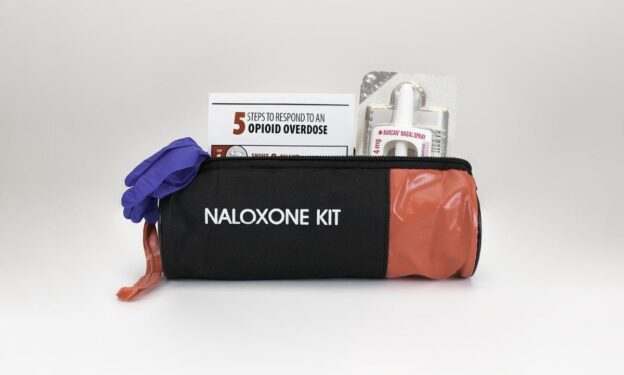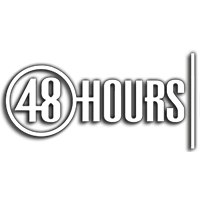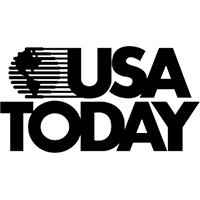Understanding Naloxone: A Life-Saving Medication
In the midst of the ongoing opioid crisis, Naloxone has emerged as a beacon of hope, offering a lifeline to those at risk of overdose. This blog post delves deep into the world of Naloxone, exploring its mechanisms, applications, and potential to save lives.
What is Naloxone?
Naloxone is a medication designed to rapidly reverse an opioid overdose. It works by blocking the effects of opioids on the brain, restoring normal breathing within minutes. Opioids, including prescription painkillers, heroin, and fentanyl, can depress the respiratory system, leading to potentially fatal breathing difficulties. Naloxone acts as an antidote, counteracting these life-threatening effects.
Naloxone’s Role in Combating the Opioid Crisis
The opioid crisis has reached epidemic proportions, with overdose deaths skyrocketing in recent years. Naloxone has become an indispensable tool in combating this crisis, empowering individuals, families, and communities to respond effectively to overdose situations. By providing a second chance at life, Naloxone offers hope for recovery and a path towards overcoming addiction.
How Does Naloxone Work?
What is an Opioid Antagonist?
Naloxone is classified as an opioid antagonist. This means it binds to the same receptors in the brain as opioids, but instead of activating them, it blocks them. This competitive binding prevents opioids from exerting their effects, effectively reversing the overdose.
For over 26 years, people from all over the world have chosen Waismann Method as their opioid detox provider.
We know the challenges you face and the importance of creating a unique and personal experience for you right from the start.Call for Detox Options 1-800-423-2482
How Naloxone Reverses Opioid Overdose
When someone overdoses on opioids, their breathing slows down or stops altogether. Naloxone, by blocking the opioid receptors, allows the brain to resume its normal control over respiration. This rapid reversal of respiratory depression is crucial in preventing brain damage and death.
Why Naloxone Doesn’t Cause a High
Naloxone itself does not produce any euphoric effects or cause a “high.” Its sole purpose is to counteract the life-threatening effects of opioids. This makes it a safe and effective intervention in overdose situations, without the risk of abuse or addiction.
Different Forms of Naloxone: Which is Right for You?
Naloxone Injection vs. Nasal Spray
Naloxone is available in two primary forms: injectable and nasal spray. The injectable form has traditionally been used by healthcare professionals, but the advent of user-friendly nasal sprays like Narcan has made it easier for anyone to administer Naloxone in an emergency.
How to Administer Naloxone Nasal Spray in an Emergency
Administering Naloxone nasal spray is straightforward, even in a stressful overdose situation. Here’s a quick guide:
- Check for responsiveness: Gently shake the person and shout their name. If they don’t respond, check for breathing.
- Assemble the nasal spray: Peel back the package and assemble the spray device according to the instructions.
- Administer the spray: Insert the tip of the nasal spray into one nostril and press the plunger firmly to release the medication.
- Monitor and support: Stay with the person and monitor their breathing. If their condition doesn’t improve after a few minutes, administer a second dose.
- Call for help: Regardless of the person’s response, call 911 immediately.
Naloxone Access: Over-the-Counter Availability and Community Programs
Efforts are underway to make Naloxone more accessible to the public. As of July 2023, Narcan (a brand name for naloxone) is available without a prescription at pharmacies. Additionally, community-based programs often provide free Naloxone training and distribution, increasing access to this life-saving medication.
Recognizing Opioid Overdose and the Role of Naloxone
Common Signs of Opioid Overdose
Recognizing the signs of an opioid overdose is crucial for timely intervention. These signs include:
- Slow or shallow breathing
- Pinpoint pupils
- Blue or grayish skin tone
- Loss of consciousness
- Unresponsiveness
Step-by-Step Guide to Administering Naloxone
If you suspect someone is overdosing on opioids, follow these steps:
- Call 911 immediately.
- Check for responsiveness.
- Administer Naloxone.
- Perform rescue breathing or CPR if necessary.
- Stay with the person until emergency services arrive.
What to Expect After Naloxone Administration
Naloxone can cause sudden withdrawal symptoms in someone who is dependent on opioids. These symptoms may include:
- Nausea and vomiting
- Agitation and restlessness
- Muscle aches and cramps
- Runny nose and watery eyes
It’s important to stay with the person and provide reassurance until medical help arrives.
Naloxone Uses Beyond Overdose Reversal
Naloxone as Part of Medication-Assisted Treatment (MAT)
Naloxone can be used in conjunction with other medications, such as buprenorphine, as part of a comprehensive treatment plan for opioid addiction. This approach helps to reduce cravings and withdrawal symptoms, increasing the chances of successful recovery.
Combining Naloxone with Buprenorphine (e.g., Suboxone)
Suboxone, a combination of buprenorphine and naloxone, is commonly used in MAT. The addition of naloxone helps to deter misuse of the medication, as injecting Suboxone can trigger withdrawal symptoms due to the naloxone.
Naloxone in Rapid Detox Protocols
Naloxone can be a key component in rapid detox protocols, but it works differently than I initially described. Here’s how it actually works:
- Accelerated Withdrawal Under Sedation: Rapid detox involves administering naloxone to someone who is heavily sedated or under anesthesia. This induces rapid and intense withdrawal symptoms, but because the person is unconscious, they don’t consciously experience the discomfort.
- Opioid-Free in Hours: The process essentially compresses the withdrawal timeline from days or weeks into a few hours. When the person wakes up, the most acute withdrawal phase is already over.
- Medical Supervision is Crucial: Rapid detox must be conducted in a hospital with careful medical monitoring due to the intensity of the withdrawal process, even though it’s done under sedation.
Why is this important?
Traditional detox can be a significant barrier to recovery because of the fear of withdrawal symptoms. Rapid detox offers a way to get through the most difficult part of withdrawal quickly and with less suffering. However, it’s important to note that rapid detox is not a complete solution in itself. It’s typically followed by other forms of mental health assistance, to support long-term recovery.
Expanding Naloxone Access to Save Lives
The Importance of Widespread Naloxone Distribution
Increasing access to Naloxone is critical in curbing the opioid epidemic. By making Naloxone widely available, we can empower individuals to respond effectively to overdoses, potentially saving countless lives.
Community Initiatives and Public Availability
Community-based programs play a vital role in Naloxone distribution and education. These programs provide free Naloxone kits and training, ensuring that those at risk and their loved ones have access to this life-saving medication.
Success Stories: How Naloxone Has Saved Lives
Countless stories highlight the power of Naloxone in reversing overdoses and providing a second chance at life. From first responders to family members, individuals equipped with Naloxone have made a profound impact in their communities.
Frequently Asked Questions About Naloxone
Can Anyone Use Naloxone?
Yes, Naloxone can be administered by anyone, even without medical training. User-friendly nasal sprays make it easy to use in emergency situations.
What Are the Side Effects of Naloxone?
Naloxone is generally safe with minimal side effects. The most common side effect is the precipitation of withdrawal symptoms in individuals dependent on opioids.
Is Naloxone Safe for Pregnant Women?
Naloxone is considered safe for pregnant women experiencing an opioid overdose. The risks associated with an overdose far outweigh any potential risks from Naloxone.
Is Naloxone available without a prescription?
Yes, in many states, Naloxone is available without a prescription at pharmacies. You can also obtain Naloxone through community-based programs.
Conclusion: Can Naloxone Save Your Life?
Naloxone has proven to be an invaluable tool in combating the opioid crisis, offering a lifeline to those at risk of overdose. By understanding how it works, recognizing the signs of an overdose, and knowing how to administer it, we can all play a part in saving lives.
Final Thoughts on Naloxone’s Role in the Opioid Epidemic
Naloxone is not a solution to the opioid epidemic, but it’s a crucial intervention that can buy time and provide a second chance at life. By expanding access to Naloxone and promoting its use, we can help reduce overdose deaths and support those struggling with addiction.
Learn More About Medically Supervised Detox Options
If you or someone you know is struggling with opioid addiction, medically supervised detox can be a safe and effective first step towards recovery. Please reach out to a healthcare professional or addiction treatment center to learn more about available options.
General Opioid Crisis & Addiction Resources:
- SAMHSA’s National Helpline: This is a great resource for finding treatment and information. It’s a well-known and trusted source. 1-800-662-HELP (4357)
- Faces & Voices of Recovery: This organization focuses on personal stories of recovery, which can be very impactful for people struggling with addiction or their loved ones.
- Shatterproof: This non-profit focuses on ending the stigma of addiction and provides resources for prevention, treatment, and recovery.
Overdose Prevention & Harm Reduction:
- National Harm Reduction Coalition: Another strong resource for harm reduction information and advocacy.
- Overdose Prevention Initiative CA
- Centers for Disease Control and Prevention (CDC): Preventing Opioid Overdose
- Centers for Disease Control and Prevention (CDC): Lifesaving Naloxone
The information provided in this blog post is intended for general knowledge and informational purposes only, and does not constitute medical advice. It is essential to consult with a qualified healthcare professional for any health concerns or before making any decisions related to your health or treatment. The creators and publishers of this blog post disclaim any liability for any damages or losses arising from the use of the information provided herein.






